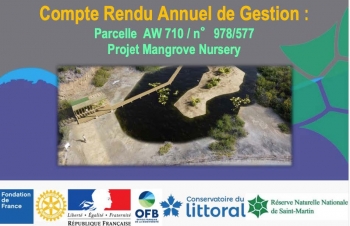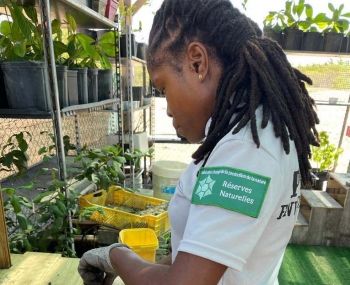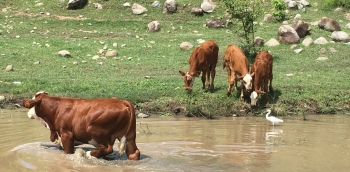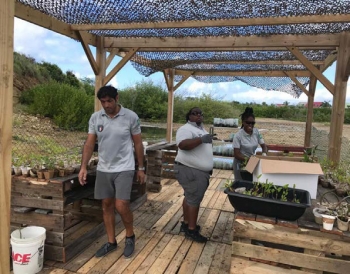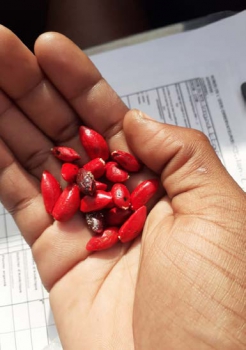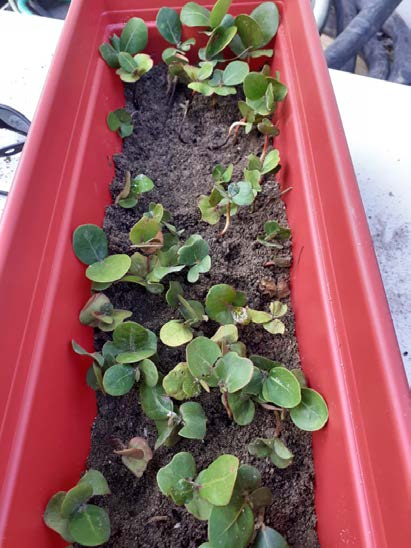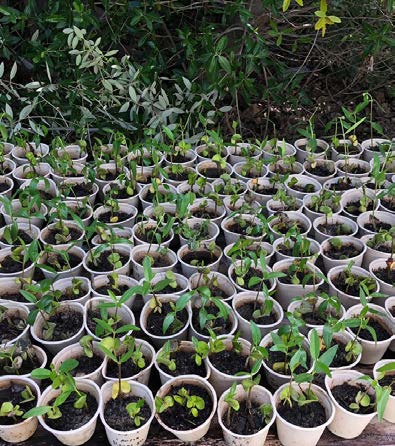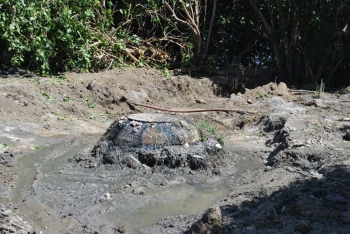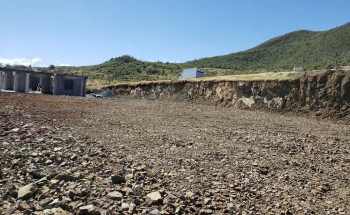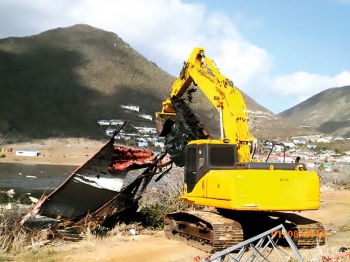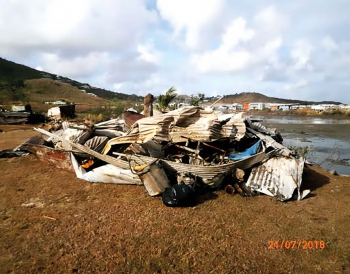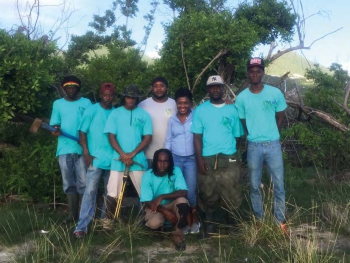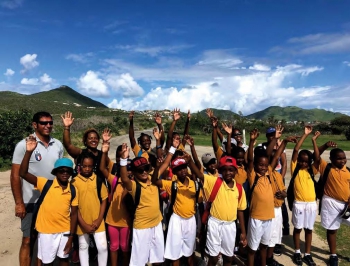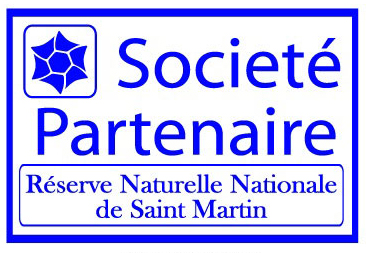Actions MS3, IP10, IP11
- Study the installation of new walking paths
-
Restoring the ecological functioningof ponds
- Replanting of damaged wetlands
Invited by the Conservatoire du Littoral, as there is an agreement delegating work on a parcel of land within the Réserve where the mangrove nursery is located in the edge of the Salines d’Orient, the Réserve Naturelle participated in the management board meeting for the local branch of the Conservatoire, in their offices at Hope Estate on March 24, 2023.
Pierre Aliotti, president of the management association for the Réserve Naturelle (AGRNSM), and Julien Chalifour, its scientific director, presented the annual report and status update for the Biodiversity Nursery project, winner of the Palme Ifrecor award in November 2022.
The goal of this project is to restore the wetlands historically filled in to create the road, and to reconnect the marshes to each other, create small islands where mangrove shoots can be planted, and finally create a raised nature path on stilts as well as a bird observation platform open to the public.
The overall cost of the project is 200,050 euros, and is financed by the Fondation de France at 88%, plus 7% by the Rotary, and 5% by the AGRNSM.

